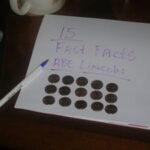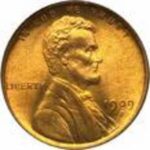Stephen Speilberg is preparing a movie on Abraham Lincoln starring Liam Nieson for 2009 release. Lincoln is the man who repeatedly failed, but never quit and remains the most widely regarded president in American history. Lincoln (1809-1865) is considered by many our greatest president because of the trials he faced. He was the first president elected from the Republican Party, which was a coalition made up of abolitionists and Whigs, the conservative party of its day. He issued the Emancipation Proclamation in 1863 which freed all slaves in the conquered South, exempting the border states that remained with the Union. The Republican-controlled Congress later freed all slaves by amendment to the United States Constitution.
The basic facts about Lincoln are well-known. Here are some unusual facts you may not have known:
After the April 1865 assassination of Lincoln by John Wilkes Booth during a performance of the comedy, Our American Cousins, no president would visit Ford’s Theater until Gerald R. Ford.
Abraham Lincoln was the first president to be photographed during his inauguration. In the photo can be found John Wilkes Booth.
Young Lincoln
Lincoln was a voracious reader as a youngster, sensitive, and was considered lazy. His ambitions did not include farming and he left home at age 22 in 1831.
Slavery
Lincoln worked on flatboats taking cargo to New Orleans where he saw, firsthand, the treatment of slaves. The experience was very disturbing.
Lincoln was brought up in a family that was anti-slavery. He retained his own anti-slavery views as president, although the Civil War was fought initially over union, not slavery, which didn’t become an issue until the Emancipation Proclamation. Mary Todd Lincoln was from a Kentucky family, members of whom fought for the Confederacy. She was criticized by the press for her background, but, if possible, was more opposed to slavery than her husband.
Lincoln became involved in an 1842 duel with State Auditor James Shields on the Missouri shore across from Alton, Illinois. Dueling was illegal in Illinois but not in her sister state. Shields was up in arms over a humorous satire published about him. Actually, Mary Todd, Lincoln’s fiance, reportedly wrote it. As challenged party, Lincoln chose the weapons… broadswords. According to tradition, as they stood beneath the trees prepared to begin their duel, the towering Lincoln reached up and casually lopped a twig from a tree far overhead. Shields is supposed to have dissolved into laughter, Lincoln joined in, as did witnesses, and everyone got into a boat and returned to Alton.
Both Abraham and Mary Todd Lincoln suffered from depression and were bipolar. Mary Todd was very clingy and extremely possessive and once screamed abuse in public at the wife of one of Lincoln’s generals she believed was flirting with the president. She also spent extravagantly on fashions and furnishings. She paid $10,000 for the bed in the present-day Lincoln Bedroom…an absolutely scandalous amount of money at the time…and Lincoln refused to ever sleep in the bed. Many years after Lincoln’s death, her son, Robert, who may have been motivated by political ambitions, had her briefly committed. He was no doubt assisted by her continued reliance on mediums and her bipolar behavior. In any event, Mary Todd and her sister arranged to have her released within four months.
If a single event could be said to have triggered Lincoln’s history of depression, it was the death of his greatest love, Ann Rutledge, in New Salem, Illinois in August 1835 of typhoid. Lincoln was 26. Afterwards, he reportedly took long solitary walks in the woods and talked of suicide.
Coffee Mill Guns and Balloons
During the Civil War, Lincoln had numerous new weapons and devices demonstrated for him. For example, the president witnessed a demonstration of the Coffee Mill Gun, a weapon similar to the later gatling gun and ordered three from the company. The War Department had refused to buy the gun when it was understocked in conventional rifles and pistols. Even then, the Coffee Mill Gun got little opportunity to prove its worth during the war. It was also Lincoln who appointed balloonist Thadeus S. C. Lowe to head the Union’s aeronautical division to provide airborne intelligence to the Army. Again, it was a case of Lincoln and Lowe seeing the potential better than the inflexible Army generals they had to deal with.
Ghosts and Seances
Abraham and Mary Todd Lincoln were both psychic. A few examples: A couple times Lincoln saw himself in a mirror with a faded ghost image. He believed it meant he would be elected to a full first term but not complete his second term. Lincoln also had a prophetic dream of his death just days before his death in which he awoke hearing sobbing, walked through the upstairs rooms of the White House, and finding no one, searched downstairs until coming to a room where a coffin lay in state in the center of a room. He asked a guard, “Who has died in the White House?” and the guard answered, “The President.” Seances were also held in the White House, especially at the instigation of Mary Todd Lincoln, desperate to contact her sons, whose deaths struck her deeply. The president sought guidance on the war. On one occasion, he was supported in releasing the Emancipation Proclamation by the convincingly channeled spirit of Unionist and slavery foe Daniel Webster, whom Lincoln held in great esteem.
Since his death, Lincoln’s ghost has been reported haunting the White House where it was actually seen by Calvin Coolidge’s wife, Grace and by Queen Wilhelmina of the Netherlands during a World War Two visit. His ghost has also been reported from numerous other locations including Springfield, Illinois, and Fort Monroe, Virginia. Although there are many reported reasons for a haunting, this appears to be a classic case of being drawn by a general sense of unfinished business.
Reference:
- Washington’s Birthday: Surprising Facts About the Father of Our Country www.associatedcontent.com/article/519279/washingtons_birthday_surprising_facts.html





